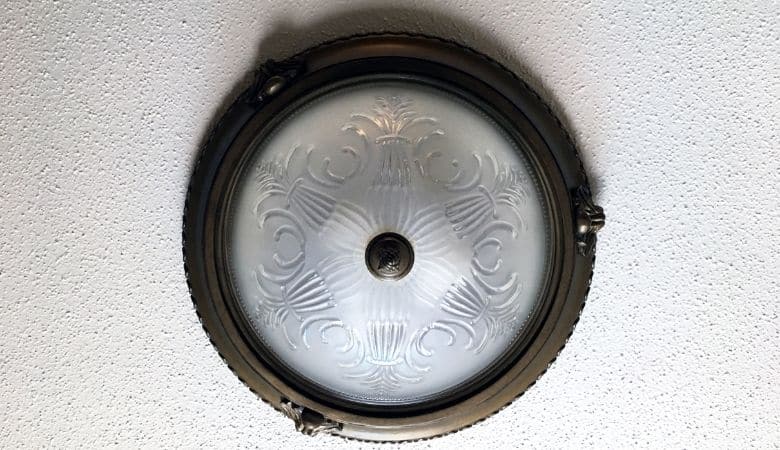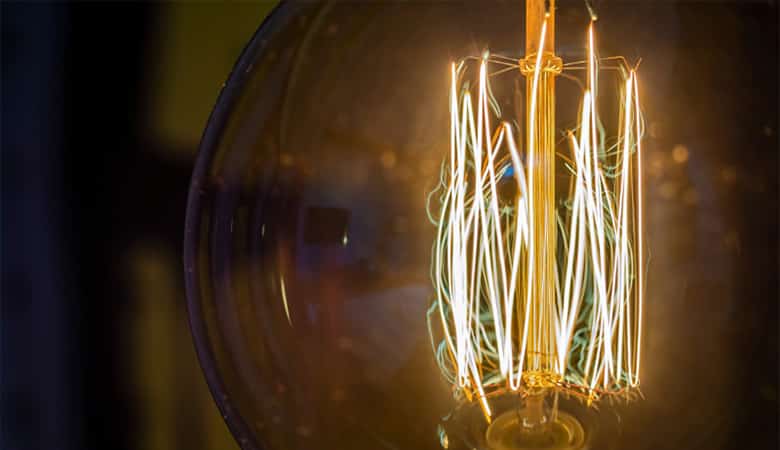It’s so important to have the right amount of lighting in any room. The proper lighting should allow for a comfortable level of brightness, where everyone can see and walk around in the room safely. That’s the most important reason for proper lighting.
Depending on the room, the lighting needs may be different; a different amount of wattage may be needed. No room is the same when it comes to lighting. What about bedrooms? How many watts should a bedroom ceiling light be?
Generally speaking, the maximum wattage ratings are printed on the light-bulb sockets of the light fixture or lamp. And as a general rule, there is a formula to calculate the amount of wattage a room needs: Room Length x Room Width x 1.5 = Amount of wattage needed to light a room. However, wattage may need to be lower in a bedroom to provide optimal sleep.
When it comes to the bedroom, it’s not all about sleeping. If it were, there’d be no need for light because we would probably prefer total darkness at all times.
While we look forward to our bedroom at night because it’s our solace for sleep and relaxation, there’s a lot of other things that take place there, like getting ready for bed, dressing in the morning, reading, relaxing, and romance, among possibly other things. During the day, a bedroom can be a busy place. Those activities that take place during the day deserve a well-lit room.
If you are interested in checking out the best rated bedroom light bulbs currently available on the market, you can do so on Amazon here.
Types of Ceiling Lighting Fixtures

The most common source of light for the bedroom ceiling is a flush-mount lighting fixture. This fixture sits directly against the ceiling and is typically a light bulb covered with a decorative glass or plastic bowl-shaped cover. Depending on the size of your bedroom, this could provide sufficient lighting for the entire room.
There is also the semi-flush-mount fixture that’s like the flush-mount but drops down a few inches from the ceiling on a short rod. This is a great choice if your bedroom’s ceiling is 10 feet or more.
A light fixture should be scaled to your bedroom’s size. In a large room, choose a large fixture. If your bedroom is small, look for an equally small, simple fixture. Both the flush mount and the semi-flush mount fixtures are popular for the ceiling and could provide ample light by themselves if sized properly.
Placement, size, and wattage have a big influence on the appropriate lighting of any room, but especially a bedroom.
Other types of light fixtures could be on the bedroom ceiling that includes:
- Pendant lights that hang down on a chain or a long rod (good for a ceiling of 10 feet or more);
- Chandeliers, which are the most formal style of light fixtures (requires a high ceiling or a small chandelier);
- Ceiling fans (will either use flush mount or semi-flush mounts);
- Recessed lights, or can lights (works well in a large bedroom with a combination of other types of lighting), and
- Track lights that are positional spotlights affixed to a metal track on the ceiling or wall.
But what about other activities in the bedroom? Lighting used for specific tasks such as reading, office or desk work, etc., is considered task lighting. Task lighting should make it easy to see the things you are working on. So you may have additional lighting in your bedroom to assist with task lighting. Some examples would be bedside or table lamps, pendant lights or floor lamps.

Sizing Your Ceiling Lighting Fixture
A general rule of thumb formula can be used to determine an appropriate diameter for ceiling fixtures. First, measure the length and width of the room. Add those two numbers together and then convert the total into inches. If your room is 10 feet by 12 feet, the ceiling fixture should be 22 inches wide.
But if you are installing a lighting fixture from the ceiling to provide lighting for a particular task in the bedroom (task lighting), you must measure the width of that object, like the bed per se. Subtract 12 inches from the total width of the object to determine how wide your lighting fixture should be.
The Formula for Wattage
Wattage refers to how much power is being used to run the light for the room. How intensely the light shines is called lumen.
The Lighting Fixture
Generally speaking, the maximum wattage ratings are printed on the light-bulb sockets of the light fixture or lamp. You will see language that reads something like: “Caution: Use only Type A lamp, maximum 60 watts.”
The Entire Room
As a general rule, there is a formula to calculate the amount of wattage a room needs:
Room Length x Room Width x 1.5 = Amount of wattage needed to light the entire room
Multiply the length of the room by the width of the room. That will give you the square footage. For example, a 16-foot-long by 14-foot wide room has a square footage of 224. To calculate the total wattage needed, multiply your square footage (224) by 1.5 and get 336 watts. The general lighting in the room will need to reach the 336 watts mark to ensure there is plenty of overall light.
In areas where task lighting is needed, disperse the lighting wattage around the room to achieve both task lighting and general lighting as appropriate. For example, if the ceiling wattage only requires 180 watts, disperse the additional watts (156) around the room as needed. Keep in mind, the total wattage used may be a little more or less than the required amount needed for the room.
Keep in mind that these wattage calculations only apply to the older incandescent bulbs and not for LED lights that are more common today. If you want to learn more about LED lights, then you can check out this post next.
Consider Using Dimmable LED Lights in Your Bedroom

Another thing to think about when it comes to lightning in the bedroom, is how it will interact with your sleep. During late evenings, and especially if you need to get up during the night, then you don’t want to turn on bright lights.
The reason for this is that bright light will interact with something called your melatonin production. For those who don’t know, melatonin is the chemical that our brain releases to make us sleepy. And research has shown that bright (especially bright and cold) light reduces melatonin levels. So, if you have too much light on during the evening and night, your sleep may be impacted negatively.
To avoid this I recommend that you use dimmable LED lights, as a lower light wattage will help you unwind during the evenings and won’t wake you up as much if you need to get up during the night. You can read more about the best types of light bulbs for a bedroom in this post.
If you are interested in checking out the best rated bedroom light bulbs currently available on the market, you can do so on Amazon here.


